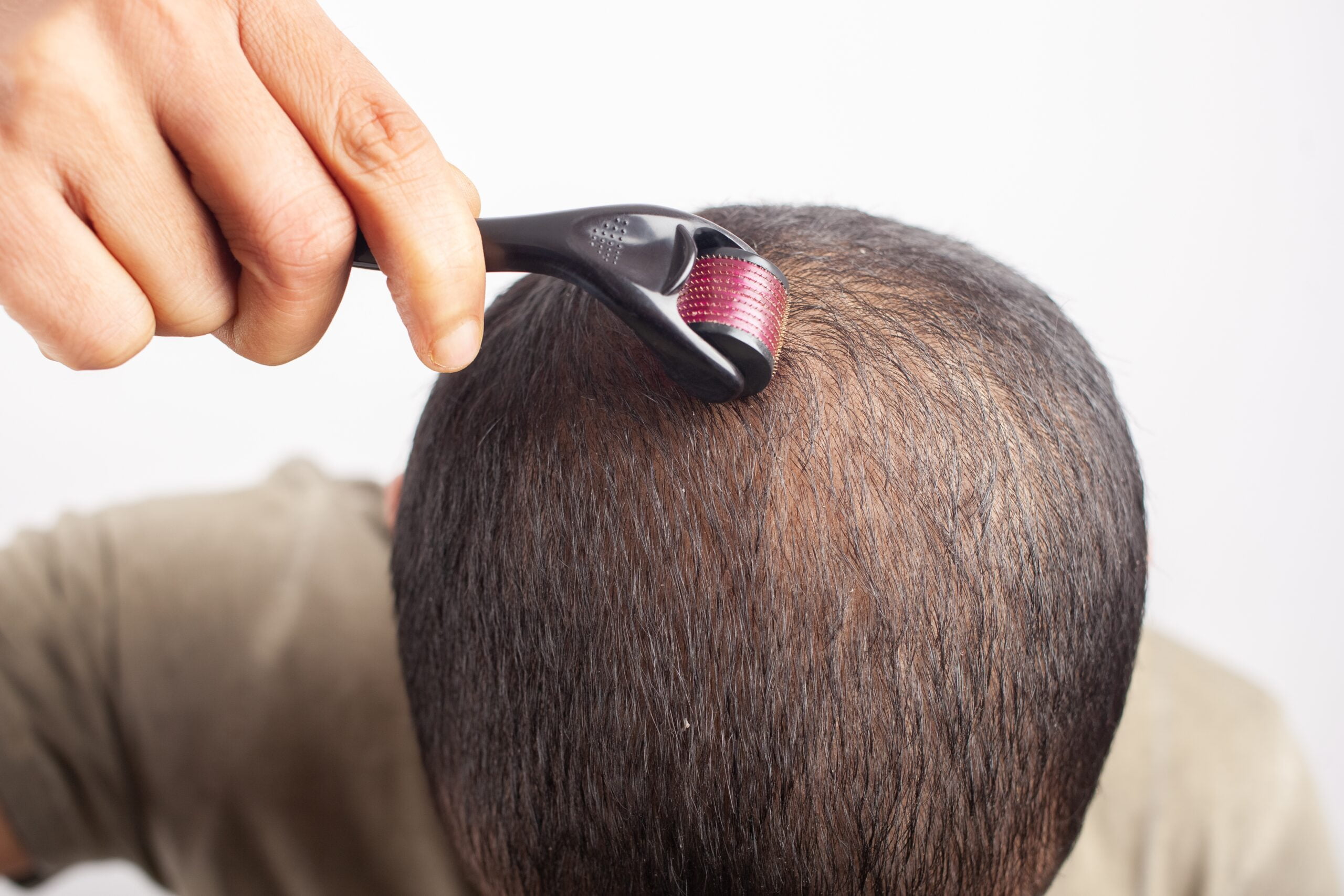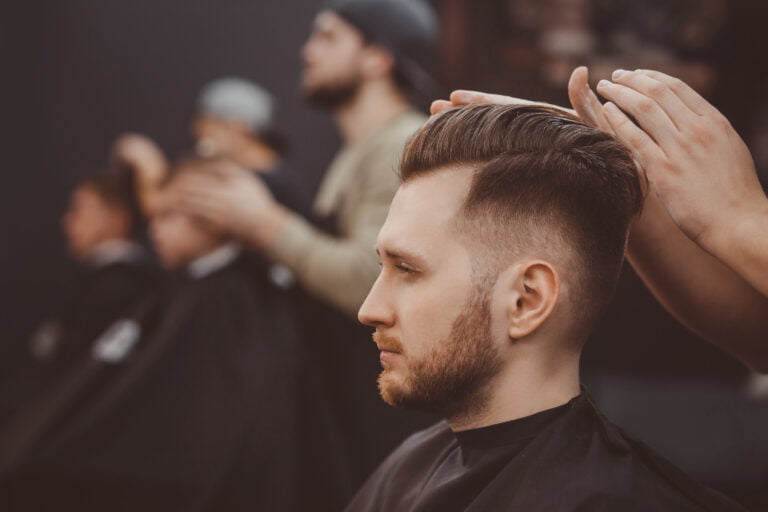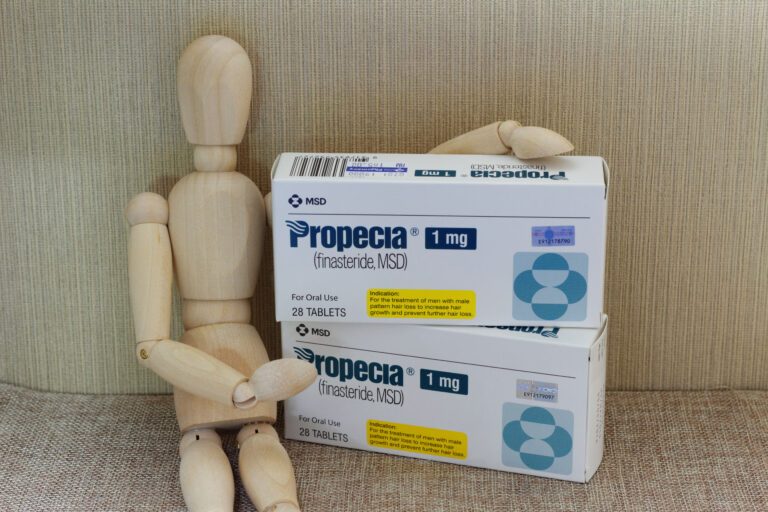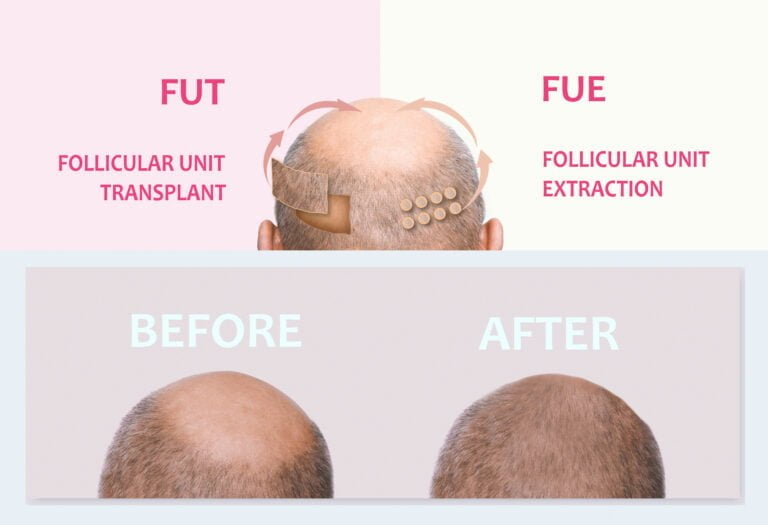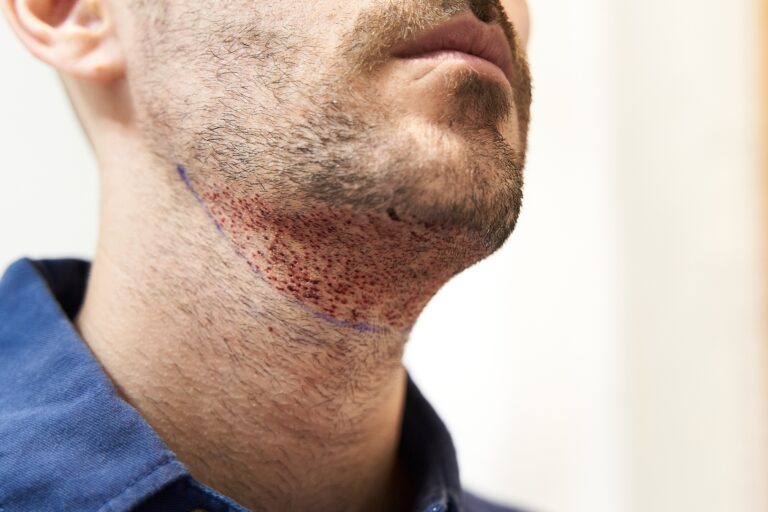Microneedling for Hair Loss: Does It Work to Regrow Hair?
Fighting hair loss is tough. It always feels like you’re postponing the inevitable. No matter what you do, the aging process will catch up, and you’ll eventually start losing hair. That can only be true in one case; your hair follicles aren’t healthy and stimulated.
Many doctors and researchers recommend microneedling for hair loss, but does it really work? Can microneedling help with hair loss? The short answer is yes! Microneedling was proven to be a great technique to stimulate hair follicles and promote hair growth.
But how does microneedling stimulate hair growth? Are there any serious side effects? And can I get satisfactory results if I derma roll at home? We’ll answer all these questions and more throughout this article.
First off, you need to understand how the microneedling process works.
How Does Microneedling Stimulate Hair Growth?
When you roll a derma roller over your scalp, the tiny needles on the roller create microscopic injuries on your scalp. These injuries are deep enough to stimulate the stem cells in your hair follicles and revitalize them without hurting your scalp.
This process gives you healthier hair follicles, which could grow stronger hairs. After regularly repeating the process, you’ll notice new hairs growing on your scalp. Additionally, your hair shaft will become thicker, fuller, and much healthier.
All these results will give you a full head of luscious hair and drastically decrease hair loss.
For an even better outcome, hair care professionals recommend pairing this technique with your hair growth treatment to maximize its effect.
How Deep Should I Be Microneedling for Hair Loss?
There isn’t a specific answer to how deep you should microneedle to treat hair loss. It depends on the results you’re looking for when using a derma roller. Each needle length will help you achieve a different goal because they reach different layers of the skin.
For example, if your goal is to improve the absorption of your topical hair loss treatment, then needle lengths of 0.25 mm to 0.5 mm will be your best choice. Shorter needles will only affect the epidermis, which is the top layer of your skin.
Reaching this layer will promote better absorption, and your scalp will benefit more from the topical treatment. However, it won’t affect the hair follicles because the needles are too short to reach them.
To stimulate your hair follicles, you need to use needles that reach the dermis, which is the middle layer of your skin. This is where needles of lengths 1.5 mm to 2.5 mm come in.
These longer needles can reach all the way to your dermis, which is the home of your hair follicles, hair follicle stem cells, and blood vessels. In other words, the dermis layer has everything you need to boost hair growth.
So puncturing this layer will help stimulate your hair follicle stem cells and produce growth factors to grow out new hair. That way, you’ll notice hair growth results without applying topical hair growth treatment.
Can Microneedling Help Regrow Hair in the Case of Alopecia?
Many people lose their hair due to stress or weakened hair follicles, but some cases have it differently. Some people suffer from hair loss due to an autoimmune disease, where their immune system attacks their hair follicles. This disease is referred to as alopecia areata.
Although alopecia isn’t a serious disease, it could cause anxiety, depression, and other psychological effects. Either way, no one would be happy to lose their hair and have empty patches on their head. Luckily, the hair loss part isn’t permanent though.
Studies have proved that microneedling can help revitalize the hair follicles of alopecia areata patients. Within only 12 weeks, researchers have noticed notable results from pairing the patient’s topical hair loss treatment with weekly microneedling sessions.
Microneedling and Androgenic Alopecia
Microneedling has also proven helpful for patients suffering from androgenic alopecia, also known as male pattern baldness. Androgenic alopecia is a genetic disease in which your body excessively responds to androgen hormones, causing hair loss.
Along with promoting hair growth, microneedling can work on the hair thinning problem of androgenic alopecia patients. Microneedling can thicken the hair shaft to give the hair a healthier, fuller look.
Since microneedling stimulates the hair follicles and keeps them in good shape, healthy hair follicles will grow thicker and healthier hair.
Of course, like any disease, the earlier you treat it, the better. Starting microneedling sessions in the earlier stages of alopecia will give notable results and increase hair density in no time.
If the patient goes completely bald, then this means that their hair follicles are dead. Unfortunately, in this case, microneedling won’t help revive dead hair follicles.
Is Microneedling at Home Effective?
As long as the technique is done right and regularly, microneedling can be rather effective in boosting your hair growth. If you’re using smaller needles or if you’re used to microneedling your scalp, there shouldn’t be anything to worry about.
Microneedling at home is a simple procedure, but you must follow the steps carefully and sterilize your tools well before and after using them. You shouldn’t apply too much pressure or use contaminated tools either. Otherwise, you’ll risk hurting yourself or getting an infection.
Tips to Remember When Microneedling at Home
After preparing your roller and sanitizing it, make sure your hair is clean and free from any products. Anything applied to your hair will be absorbed, so there can’t be any styling products or leftover shampoo and conditioner.
You’re free to put on your topical hair growth treatment or a delicate soothing serum after finishing your microneedling session. Gently massage your treatment or serum into the scalp and leave it to be absorbed.
After applying your serum, don’t wash your hair and allow your serum to soak in for a day or two. That way, you get the most out of your serum and leave your scalp to fully heal before your next wash.
Another tip to nail your microneedling session at home is to dampen your hair before your start. That way, it’ll be easier to hold down and prevent any flyaways from getting tangled up in the needles. Trust me, it’ll make your life much easier.
Finally, never overdo microneedling within one session. No matter how tempting it may seem or how satisfying it may sound, don’t go over the spot more than seven times per direction. That’s your maximum. Otherwise, you’ll irritate your scalp, or maybe even hurt yourself.
Leave It to a Professional
Remember that you’re limited to a certain needle length to prevent any injuries at home. Such length can do wonders in aiding treatment absorption. However, they can only stimulate hair follices and promote hair growth so much.
That’s why it’s best to seek help from a professional if you’re looking to bring back lost hair. They’ll have the right tools and, most importantly, the right techniques to give you much better hair growth results.
What Are the Risks of Microneedling for Hair Loss?
Like any procedure that cuts through the skin, microneedling comes with a few risks. The side effects range from irritation to permanent scarring and increased hair loss. Their severity depends mainly on where you had your procedure and the needle size used.
Using long needles at home is the most common reason for getting injured or infected. Most people aren’t trained enough to use long needles, so they might penetrate the needle too deep into the skin, causing permanent damage to their hair follicles.
The second riskier option is to have a microneedling session done by a technician at a spa or beauty salon. Not only do you risk injury and permanent hair damage, but you also risk getting infected.
Spas and salons don’t always sterilize their tools properly as specialized clinics do. And microneedling leaves open wounds on your scalp and causes pin-point bleeding. This means that you’ll be subjected to skin infections that could rather increase your hair loss.
So to ensure your safety and to get the best results, leave the microneedling hair loss procedure to trained and certified professionals. Only they know how to use a derma roller with long needles correctly without permanently scarring or infecting your scalp.
In Conclusion
Microneedling is a powerful tool to reduce hair loss and regrow your hair. When used correctly, microneedling can be enough to give you notable results. In most cases, you might not even need to pair your derma roller with topical treatments to help regrow your hair.
This powerful effect doesn’t exclude hair loss diseases, such as alopecia areata and androgenic alopecia. In other words, alopecia patients who have really thin hair can bring back their hair by simply sticking to a regular microneedling routine.
But remember, microneedling, like topical hair growth treatments, is only a way to fix a symptom, not the cause. You’ll need to visit a doctor to know the underlying cause of your hair loss problem and try to fix the problem from its roots.

